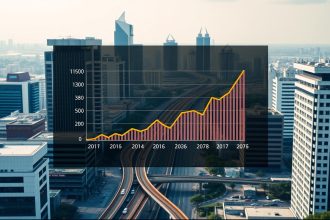In economic news, the issue of food inflation has been a cause for concern in many countries around the world. The prices of essential food items have been on the rise, impacting the budgets and livelihoods of people. The following is a list of countries and their respective food inflation rates:
🇻🇪 Venezuela: 450%
🇱🇧 Lebanon: 304%
🇦🇷 Argentina: 117%
🇪🇬 Egypt: 65.9%
🇹🇷 Turkey: 53.92%
🇮🇷 Iran: 42.6%
🇵🇰 Pakistan: 39.49%
🇭🇺 Hungary: 29.3%
🇳🇬 Nigeria: 24.82%
🇬🇧 United Kingdom: 18.3%
🇵🇱 Poland: 17.8%
🇺🇦 Ukraine: 16.5%
🇧🇪 Belgium: 15.06%
🇪🇺 European Union: 15.04%
🇨🇿 Czechia: 14.5%
🇫🇷 France: 13.6%
🇳🇴 Norway: 13.45%
🇩🇪 Germany: 13.4%
🇳🇱 Netherlands: 13%
🇸🇪 Sweden: 12.54%
🇦🇹 Austria: 12.3%
🇿🇦 South Africa: 11.8%
🇨🇱 Chile: 11.78%
🇮🇹 Italy: 11.2%
🇪🇸 Spain: 10.33%
🇮🇪 Ireland: 10.2%
🇧🇩 Bangladesh: 9.73%
🇫🇮 Finland: 9.21%
🇲🇽 Mexico: 9.1%
🇩🇰 Denmark: 8.8%
🇯🇵 Japan: 8.6%
🇨🇦 Canada: 8.3%
🇦🇺 Australia: 8%
🇸🇬 Singapore: 6.8%
🇵🇭 Philippines: 6.7%
🇺🇸 United States: 5.7%
🇨🇭 Switzerland: 5.1%
🇦🇪 UAE: 4.83%
🇮🇳 India: 4.49%
🇵🇦 Panama: 4.21%
🇰🇷 South Korea: 4.16%
🇧🇷 Brazil: 4.01%
🇻🇳 Vietnam: 3.78%
🇮🇩 Indonesia: 2.85%
🇭🇰 Hong Kong: 2.6%
🇨🇳 China: 2.3%
🇸🇦 Saudi Arabia: 0.94%
🇷🇺 Russia: 0.18%
🇶🇦 Qatar: -1.49%
🇳🇪 Niger: -1.9%
🇦🇫 Afghanistan: -3.3%
🇱🇷 Liberia: -5.38%
🇸🇸 South Sudan: -14.2%
At the top of the list, Venezuela is facing an alarming food inflation rate of 450%, indicating a severe crisis. This is followed by Lebanon with 304% and Argentina with 117%, both experiencing significant economic challenges. Other countries, such as Egypt, Turkey, Iran, and Pakistan, are also grappling with high food inflation rates, posing difficulties for their populations.
On the other end of the spectrum, countries like Saudi Arabia, Russia, Qatar, Niger, Afghanistan, Liberia, and South Sudan have negative food inflation rates. While this might suggest a decrease in food prices, it’s important to consider the underlying economic conditions in these nations, which may contribute to the negative inflation rates.
Meanwhile, some developed countries such as the United Kingdom, European Union member states, and various European nations are experiencing moderate food inflation rates ranging from 18.3% down to 10.2%. These rates, although lower in comparison to countries facing higher inflation, still pose challenges for consumers and their purchasing power.
The varying rates of food inflation highlight the complexities and disparities within the global economy. Governments and policymakers in the affected countries will need to address these issues to mitigate the impact on their citizens’ well-being and ensure access to affordable and nutritious food for all.












